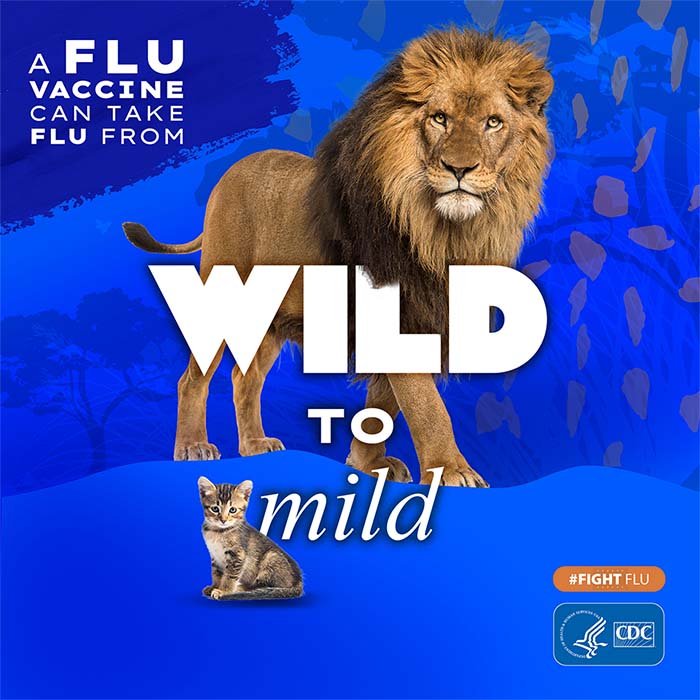Report of Human Infection with Swine Origin Influenza A (H3N2)
The December 17, 2010 FluView reported one human infection with swine origin influenza A (H3N2) virus in the state of Minnesota as part of U.S. surveillance and reporting of novel influenza A viruses. Test samples from one patient in Minnesota were confirmed at CDC as positive for swine origin triple-reassortant (tr) H3N2 influenza viruses—viruses that normally infect pigs. Although human infection with swine influenza viruses is rare, it can occur. This is most likely to occur when people are in close proximity to infected pigs, such as in pig barns and at livestock exhibits housing pigs at fairs. The patient in Minnesota with confirmed trH3N2 infection had exposure to pigs prior to illness onset. There is no documented human-to-human transmission of this virus or any evidence of community transmission at this time. An investigation of this case is ongoing. Cases of human infection with swine influenza viruses underscore the importance of ongoing human and animal influenza surveillance.
This case of human infection with swine origin influenza virus (SOIV) brings the total number of human infections with swine origin influenza viruses reported to CDC since 2005 to 19. Previously, five of these reports had been swine origin A (H3N2) viruses. The most recent Minnesota case brings the number of reports swine origin A (H3N2) infections in humans in the United States to six. Human infections with swine origin H3N2 virus infections have also been reported from Pennsylvania and Wisconsin in October and November 2010, Minnesota in May 2010, Iowa in September 2009, and Kansas in August 2009.
Swine influenza (swine flu) is a respiratory disease of pigs caused by type A influenza viruses that regularly cause outbreaks of influenza in pigs. Swine flu viruses can result in high illness rates in pig herds, but generally cause few deaths in pigs. Swine influenza viruses can circulate among pigs throughout the year, but most outbreaks occur during the late fall and winter months, similar to outbreaks in humans. There are four main influenza type A virus subtypes that have been isolated in pigs: H1N1, H1N2, H3N2 and H3N1. Most flu viruses circulating in pigs are referred to as "triple-reassortant" viruses because these flu viruses contain genes from human, swine and avian influenza viruses.
It's important to note that swine influenza viruses are not transmitted to humans by food. You cannot get swine influenza from eating pork or pork products. Eating properly handled and cooked pork and pork products is safe.
In 2007 human infections with novel influenza viruses such as swine influenza became nationally notifiable. Previously, CDC has received reports of approximately one human infection with a swine influenza virus every one to two years, but in the past few years, about four cases have been reported per year.
These trH3N2 viruses are different from the 2009 H1N1 virus that has been circulating in the United States since late April 2009. They are also different from human seasonal influenza A (H3N2) viruses that typically circulate among people during the flu season. Swine trH3N2 viruses commonly circulate in pigs in North America, but human infections are rarely detected. These viruses are different from the swine classical H1N1 or swine trH1N1 influenza viruses that also circulate in pigs in North America because they have H3N2 surface antigens. TrH3N2 viruses first were detected in North American swine herds in the late 1990s. The H3 and N2 genes originated from human seasonal H3N2 influenza viruses that circulated globally among humans in the late 1990s. However, currently circulating swine H3 and N2 genes are now notably different from human influenza virus H3 and N2 genes.
Although the vast majority of instances of human infection with animal influenza viruses do not result in human-to-human transmission, each case should be fully investigated to be sure that such viruses are not spreading among humans and to limit further exposure of humans to infected animals if infected animals are identified. Surveillance for both seasonal and novel influenza viruses is conducted by CDC and its state and local health partners year round.
For more information about swine influenza, visit the CDC swine flu website.
Weekly U.S. surveillance updates are published in FluView.
